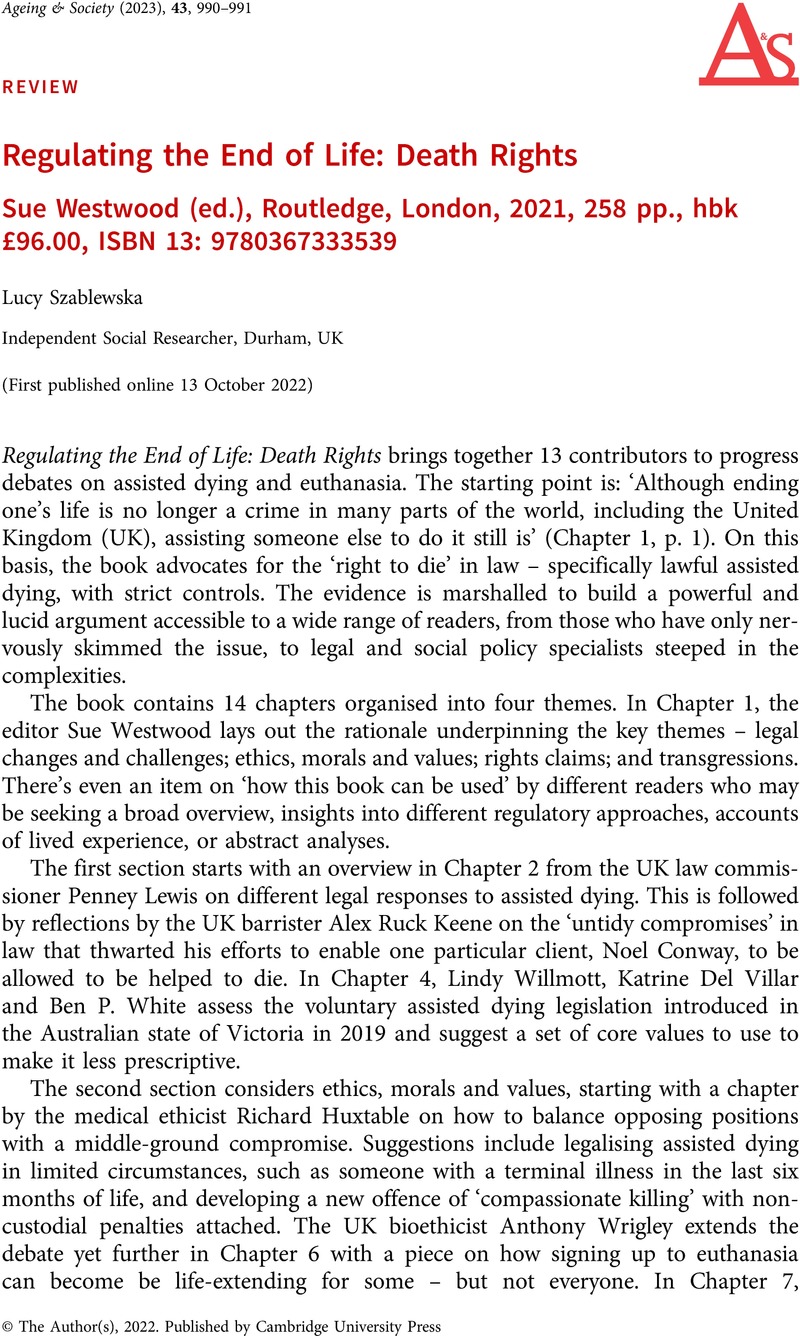No CrossRef data available.
Article contents
Regulating the End of Life: Death Rights Sue Westwood (ed.), Routledge, London, 2021, 258 pp., hbk £96.00, ISBN 13: 9780367333539
Review products
Regulating the End of Life: Death Rights Sue Westwood (ed.), Routledge, London, 2021, 258 pp., hbk £96.00, ISBN 13: 9780367333539
Published online by Cambridge University Press: 13 October 2022
Abstract
An abstract is not available for this content so a preview has been provided. Please use the Get access link above for information on how to access this content.

- Type
- Reviews
- Information
- Copyright
- Copyright © The Author(s), 2022. Published by Cambridge University Press


